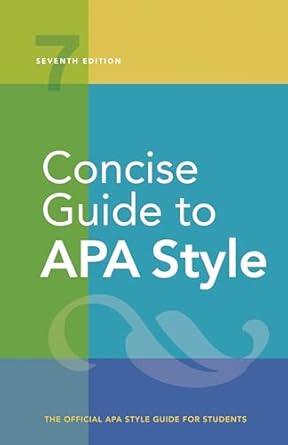[toc]
biasfree writing apa guidelines best practices
Concise Guide to APA Style: 7th Edition (OFFICIAL)
Page 79 Review
The Importance of Bias-Free Language: A Commentary on APA Guidelines
The American Psychological Association (APA) places significant emphasis on ethical writing practices, particularly concerning the avoidance of bias.
The “Bias-Free Language Guidelines,” as outlined in their style manual, represent a crucial step towards fostering inclusivity and respect within academic and professional discourse.
This commentary delves into the core principles of these guidelines, highlighting their significance and practical implications for writers.
The Core Principles of Bias-Free Language
The foundation of these guidelines rests on the principle of treating all individuals and groups with fairness and respect.
As the text states: “Writers must strive to use language that is free of bias, meaning the implied or irrelevant evaluation of the group or groups they are writing about.” This statement immediately sets the tone, emphasizing a proactive approach to identify and eliminate any language that might perpetuate negative stereotypes or prejudices.
The APA’s commitment is further clarified: “As an organization, APA is committed to both the advancement of science and the fair treatment of individuals and groups.
These principles require that students and authors who use APA Style avoid perpetuating demeaning attitudes in their writing.” This dual commitment underscores the inextricable link between scientific integrity and ethical communication.
Dehumanizing or biased language not only violates ethical principles but also undermines the objectivity and credibility of research.
Areas of Sensitivity and Inclusive Language
The guidelines explicitly address several sensitive areas where bias can easily creep into writing.
These include age, disability, gender, participation in research, racial or ethnic identity, sexual orientation, and socioeconomic status.
The document highlights the unacceptable nature of perpetuating biased assumptions: “It is unacceptable to use constructions that might imply prejudicial beliefs or perpetuate biased assumptions against persons on the basis of age, disability, gender, participation in research, racial or ethnic identity, sexual orientation, socioeconomic status, or some combination of these or other personal factors (e.g., marital status, immigration status, religion).” This comprehensive list serves as a crucial reminder of the diverse dimensions of human identity that must be considered when crafting inclusive language.
Instead of relying on potentially harmful stereotypes, the guidelines advocate for: “affirming and inclusive language.” This shift towards affirmative language encourages writers to actively promote positive and respectful portrayals of individuals and groups.
A Practical Guide to Bias-Free Writing
The APA guidelines offer a practical roadmap for writers seeking to improve their sensitivity and accuracy.
The chapter organization emphasizes this practical approach: “This chapter contains guidelines for writing about people respectfully and accurately.
We start by providing general guidelines for writing without bias, followed by sections addressing the specific topics of age, disability, gender, participation in research, race and ethnicity, sexual orientation, socioeconomic status, and intersectionality.” By addressing specific categories, the guidelines provide tailored recommendations for navigating potentially complex issues.
The guidelines also offer resources for further learning: “More examples of bias-free language can be found on the APA Style website (https://apastyle.apa.org).” This directs writers to a wealth of additional examples and guidance, making the process of learning and implementing bias-free language more accessible.
The Importance of Self-Reflection and Feedback
The guidelines emphasize the importance of self-reflection and seeking feedback: “Just as you have learned to check what you write for spelling, grammar, and wordiness, practice rereading your work for preconceptions about groups of people.” This analogy highlights the need to approach bias-free language with the same level of diligence and attention as one would give to grammar or style.
Furthermore, the document suggests: “When possible, ask people from the groups about which you are writing to read and comment on…” This recommendation underscores the crucial role of lived experience in identifying and addressing bias.
By actively seeking input from members of the groups being represented, writers can gain valuable insights and avoid perpetuating harmful stereotypes.
Conclusion
The APA’s “Bias-Free Language Guidelines” are an essential resource for anyone committed to ethical and inclusive communication.
By promoting awareness, providing practical guidance, and encouraging self-reflection, these guidelines empower writers to create content that is both accurate and respectful.
Adhering to these principles is not merely a matter of political correctness; it is a fundamental requirement for fostering a more just and equitable society through the power of language.
Buy full ebook for only $18: https://www.lulu.com/shop/american-psychological-association/concise-guide-to-apa-style-7th-edition-official/ebook/product-rmzpq54.html?page=1&pageSize=4
Biasfree Writing Apa Guidelines Best Practices
Read more: Mastering Quotations: Accuracy & Academic Integrity


Leave a Reply